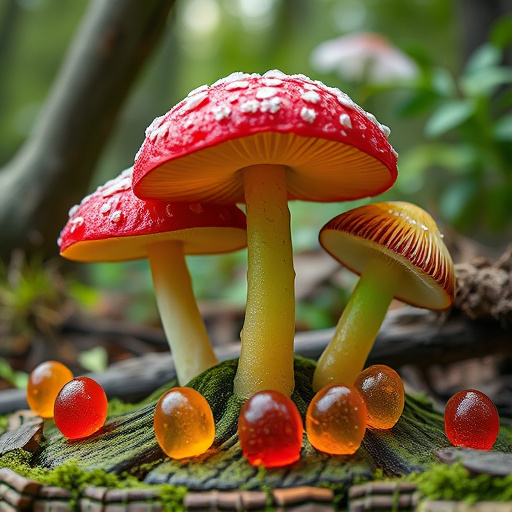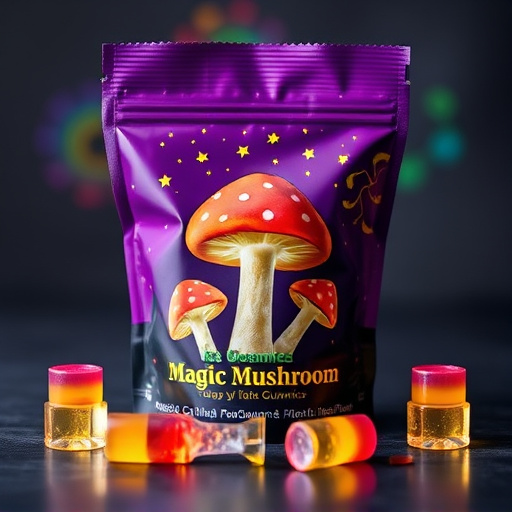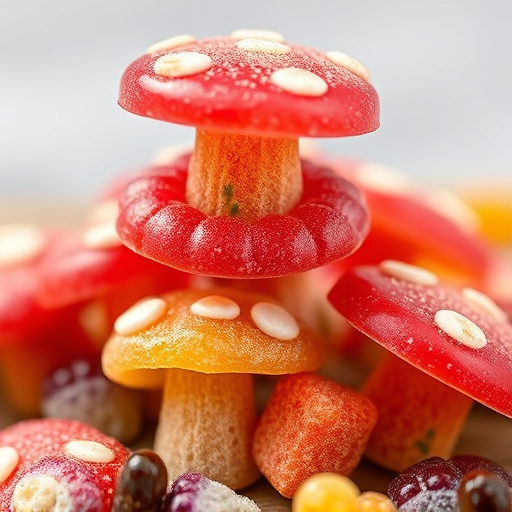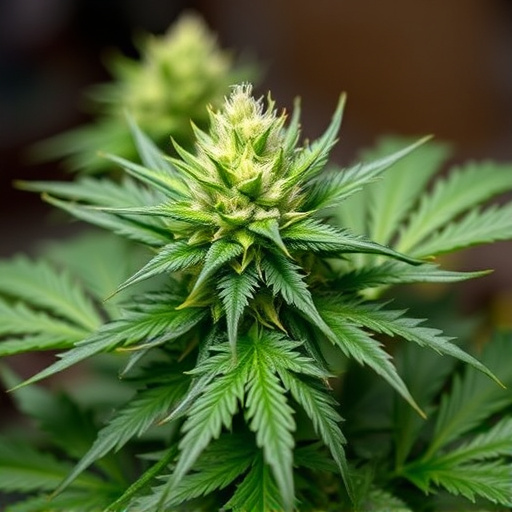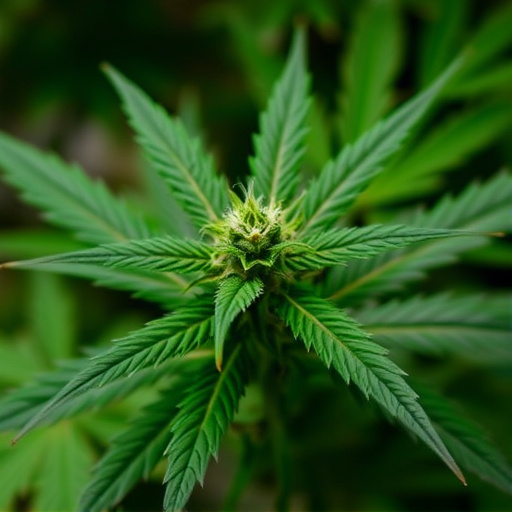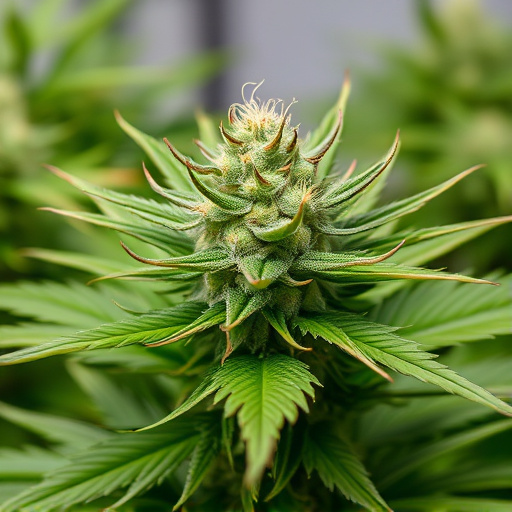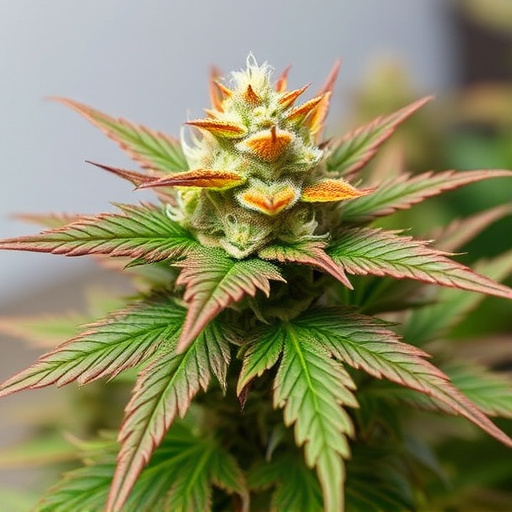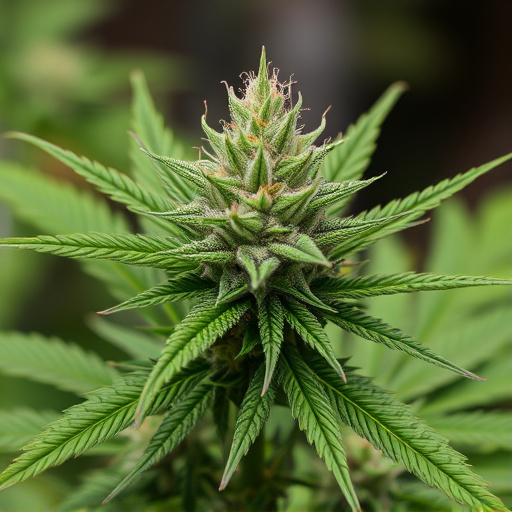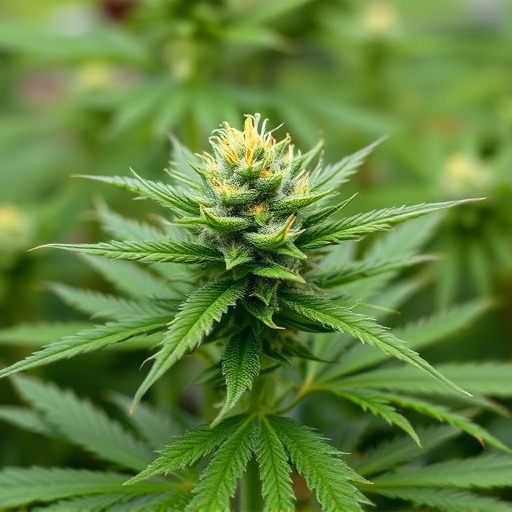Cannabis flower's unique aroma comes from terpenes, aromatic compounds that contribute to scent and potential effects of different strains, with over 100 types found in cannabis. These interact with cannabinoids like THC and CBD, modifying or enhancing specific effects for targeted therapeutic use. Genetic diversity and selective breeding create diverse strains with distinct terpene and cannabinoid compositions, affecting aromas and associated effects. Cultivation conditions like temperature, humidity, lighting, soil type, and growing systems influence terpene development, shaping the potency and distinctiveness of cannabis aroma.
Cannabis flowers are renowned for their distinct and often powerful aroma, which can vary widely between strains. This sensory experience is driven by a complex interplay of chemical compounds, primarily terpenes. These volatile organic compounds not only contribute to the characteristic scent but also play a crucial role in modulating cannabis strains’ effects. The unique aromatic profiles of different strains are influenced by both genetic diversity and environmental factors, making each cannabis flower a fascinating study of nature’s chemistry.
- The Role of Terpenes in Cannabis Scent
- Genetic Diversity and Aromatic Profiling in Cannabis Strains
- How Environment Influences the Intensity of Cannabis Aroma
The Role of Terpenes in Cannabis Scent
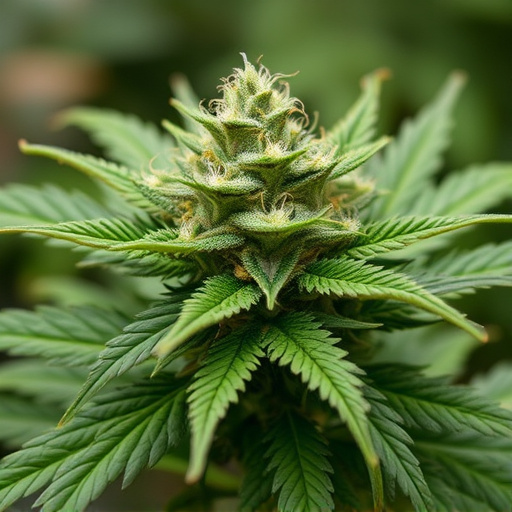
The distinctive aroma of cannabis flower is largely attributed to its rich profile of terpenes, aromatic compounds that play a crucial role in both the scent and potential effects of different cannabis strains. Terpenes are volatile oils naturally produced by many plants, including hemp, and they contribute significantly to the unique character of each strain. With over 100 types of terpenes found in cannabis, each offering distinct scents ranging from citrusy and floral to piney and spicy, these compounds can greatly influence the sensory experience.
Beyond scent, terpenes are believed to interact with cannabinoids like THC and CBD, potentially enhancing or modifying their effects. This interaction is an area of ongoing research, but early indications suggest that specific terpenes may amplify certain strains’ relaxing or energizing properties, making them more appealing for targeted cannabis use and its various therapeutic applications.
Genetic Diversity and Aromatic Profiling in Cannabis Strains
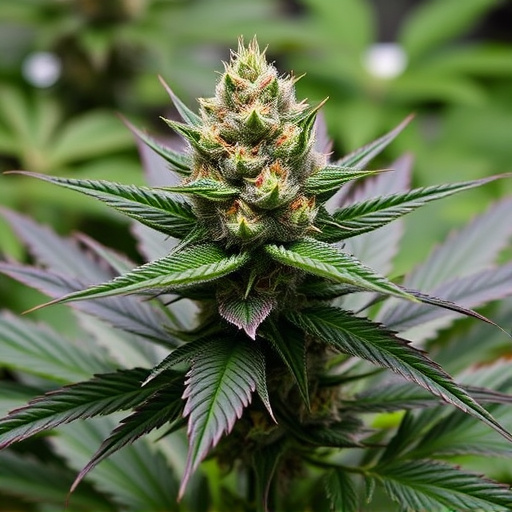
The diverse world of cannabis is characterized by an equally varied array of scents, each strain boasting a unique aromatic profile. Genetic diversity plays a pivotal role in shaping these distinct smells. Cannabinoids and terpenes, chemical compounds responsible for cannabis’ aroma and effects, are influenced by the genetic makeup of each strain. Through selective breeding and hybridization, growers have cultivated countless cannabis strains, each with its own specific terpene and cannabinoid composition, contributing to the vast spectrum of scents and associated effects.
Aromatic profiling is a crucial process in the cannabis industry, allowing cultivators and consumers to understand and appreciate the intricate relationships between genetics and smell. By studying and documenting the aromatic profiles of different strains, researchers can better categorize and describe the diverse range of cannabis varieties available. This knowledge enables consumers to make informed choices based on their desired effects and olfactory preferences, enhancing the overall cannabis experience.
How Environment Influences the Intensity of Cannabis Aroma

The environment plays a pivotal role in shaping the intensity of cannabis aroma, with various factors contributing to its potency. The cultivation conditions, including temperature, humidity, and lighting, significantly impact the development of terpenes, which are responsible for the distinctive scents associated with different cannabis strains and their effects. For instance, warmer temperatures tend to encourage the production of more volatile terpene compounds, leading to a richer, more pungent aroma. Conversely, cooler environments may result in a milder scent as certain terpenes evaporate more slowly.
Additionally, the growth medium and feeding practices can alter the chemical composition of cannabis. Organic soil enriches the plant with diverse microbial activity, potentially enhancing specific terpene profiles. Hydroponic systems, on the other hand, offer precise control over nutrient delivery, allowing cultivators to optimize conditions that favor the accumulation of desirable terpenes, thus creating cannabis strains with particularly strong and unique aromas.
Cannabis flower’s strong scent is a result of a complex interplay between terpenes, genetic diversity, and environmental factors. Terpenes, known for their aromatic properties, contribute significantly to the unique olfactory experiences associated with different cannabis strains and their potential effects. Understanding the aromatic profiling of various strains and how environment shapes their scent can enhance our appreciation of this diverse plant. By exploring these aspects, we gain insights into why cannabis flowers exhibit such a wide range of intense aromas, catering to both connoisseurs and those seeking specific therapeutic benefits.


